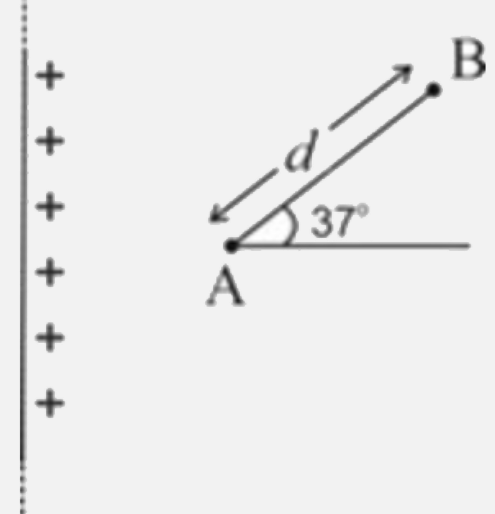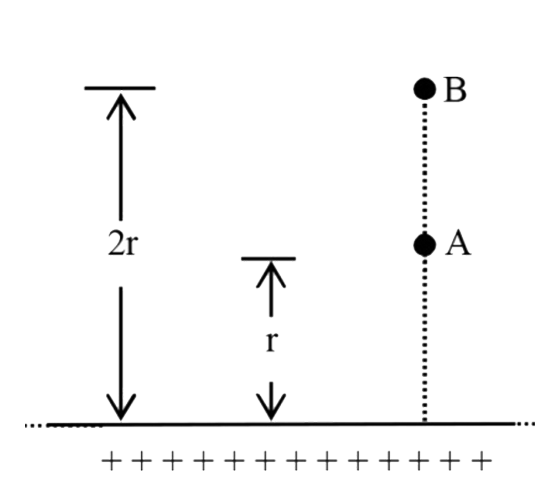Figure shows two rings having charges Q and −√5Q. Find potential difference a and B i.e. (VA−VB).

VA=KQR+K(−√5Q)√(2R)2+(R)2,VB=K(−√5Q)2R+K(Q)√(R)2+(R)2
from above, we can esily find VA−VB.
Topper's Solved these Questions
- ELECTROSTATICSBook:RESONANCE ENGLISHChapter:ELECTROSTATICSExercise:Problems
Explore 22 Videos
- ELECTROSTATICSBook:RESONANCE ENGLISHChapter:ELECTROSTATICSExercise:Exercise-1 Section (A)
Explore 9 Videos
- ELECTROMAGNETIC INDUCTIONBook:RESONANCE ENGLISHChapter:ELECTROMAGNETIC INDUCTIONExercise:A.l.P
Explore 19 Videos
- EXPERIMENTAL PHYSICSBook:RESONANCE ENGLISHChapter:EXPERIMENTAL PHYSICSExercise:PART -II
Explore 10 Videos
Similar Questions
Potential difference across AB , i.e., VA−VB is

View SolutionPotential difference between points A and B (i.e. VA−VB) is -----

View SolutionConsider
 .
.
The potential difference VA−VB is.
View SolutionIn the figure shown, conducting shells A and B have charges Q and 2Q distributed uniformly over and B. Value of VA−VB k is kQnR. Find n(k=14π∈0

View SolutionAn infinite thin non - conducting sheet has uniform surface charge density σ. Find the potential difference VA−VB between points A and B as shown in the figure. The line AB makes an angle of 37∘ with the normal to the sheet. (sin37∘=35)

View SolutionPotential difference VB−VA in the network shown is

View SolutionIn figure two points A and B are located in a region of electric field . The potential difference VB−VA is

View SolutionAn infinitely long line of linear charge density λ is shown in the figure. The potential difference VA−VB between the two points A and B is

View SolutionThe following figure shows a part of a circuit,the potential difference between C and B(VC−VB) is

View SolutionThe figure shows an inductor of 2H through which a current increasing at the rate of 5A/sec is flowing.Find the potential difference VX−VY.

View Solution

